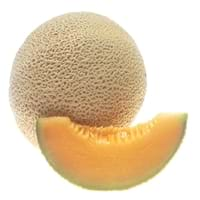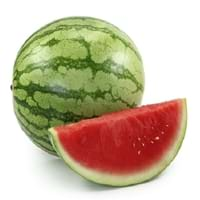Health Benefits
Cancer prevention, Heart care, Improves eye vision, Prevents diabetes, Reduces stress
Anti-aging benefits, Anti-inflammatory properties, Asthma treatment, Body hydration, Cancer prevention, Digestive aid, Skin cleansing, Skin rejuvenation
General Benefits
Boosts immune system, Cures cough, Cures fever, Digestive aid, Eye care, Helps in weight loss
Anti-inflammatory properties, Body hydration, Controls blood pressure, Digestive aid, Maintains healthy cholesterol level
Skin Benefits
Anti-aging benefits, Hydrates skin, Skin rejuvenation, Treatment of skin diseases
Anti-aging benefits, Brightens and lightens complexion, Hydrates skin
Hair Benefits
Good conditioner, Prevents hair loss, Protects hair
Promotes longer and healthier hair, Regulates hair growth
Allergy Symptoms
Abdominal pains, Anaphylaxis, Breathing difficulty, Diarrhea, Dizziness, Hives, Itching of mouth, Nasal congestion, Nausea, Vomiting
Breathing difficulty, Decrease in blood pressure, Dizziness, Eczema, Hives, Runny nose, Swelling of mouth, tongue or lips, Watery eyes
Side Effects
Allergic reaction, Bloating, Indigestion
Allergic reaction, Bloating, Diarrhoea, Indigestion, Intestinal gas, Nausea, Vomiting
Best Time to Eat
As a snack in the late afternoon, Don't consume at night and before bed, Eat the fresh ones, avoid mixing with any other foods, don't eat after meal., Morning time (before lunch)
As a snack in the late afternoon, Don't consume at night and before bed, Eat the fresh ones, avoid mixing with any other foods, don't eat after meal., Strictly avoid empty stomach
Vitamin B5 (Pantothenic Acid)
Vitamin C (Ascorbic Acid)
Vitamin K (Phyllochinone)
Calories in Fresh Fruit with Peel
Not Available
Not Available
Calories in Fresh Fruit without Peel
Calories in Frozen Form
Not Available
Calories in Canned Form
Not Available
Not Available
Varieties
Hales Best Jumbo, Sweet 'N Early Hybrid, Hearts of Gold, Ambrosia, Athena, Honey Bun Hybrid, Fastbreak and Superstar
Sugar Baby, Sangria, Golden Midget, Starlight, Jubilee, Starbrite, Extazy, Stars 'n' Stripes, Mickylee, Yellow Baby, Yellow Doll, Little Baby Flower, Sweet Favorite and Cream of Saskatchewan
Color
Orange
Canary yellow, Coral red, Orange, Salmon yellow, Scarlet red, White
Inside Color
Creamy Orange
Red
Taste
Juicy, Musky, Sweet
Sweet
Origin
Africa, India
Southern Africa
Soil Type
Sandy
Sandy, Well-drained
Climatic Conditions
Dry, Hot
Dry, Hot
Facts about
- Cantaloupe is known as rock-melon in some parts of the world.
- Christopher columbus first introduced cantaloupes to north america in 1494.
- The name 'Cantaloupe' as it is cultivated in papal gardens of cantaloupes, Italy.
- Watermelon contain 91% of water.
- In Japan & Chine, watermelon is a popular gift to bring a host.
- Entire watermelon is edible, even the rinds & seeds.
- There are more than 1200 varieties grown in the world.
Other Countries
Iran, Romania, Turkey, United States of America
Algeria, Brazil, Egypt, Iran, Kazakhstan, Mexico, Spain, Turkey, United States of America
Top Importer
United States of America
Germany
Botanical Name
Cucumis melo var. cantalupensis
Citrullus Lanatus
Synonym
Cucumis melo var. reticulatus
Citrullus vulgaris
Subkingdom
Tracheobionta
Tracheobionta
Division
Magnoliophyta
Magnoliophyta
Class
Magnoliopsida
Magnoliopsida
Subclass
Dillenhidae
Dillenhidae
Order
Cucurbitales
Cucurbitales
Family
Cucurbitaceae
Cucurbitaceae
Species
C. melo
C. lanatus
Generic Group
Gourd
Gourd
Difference Between Cantaloupe and Watermelon
We might think that Cantaloupe and Watermelon are similar with respect to nutritional value and health benefits. But the nutrient content of both fruits is different. Cantaloupe and Watermelon Facts such as their taste, shape, color, and size are also distinct. The difference between Cantaloupe and Watermelon is explained here.
The amount of calories in 100 gm of fresh Cantaloupe and Watermelon with peel is Not Available and Not Available and the amount of calories without peel is 34.00 kcal and 30.00 kcal respectively. Thus, Cantaloupe and Watermelon belong to Low Calorie Fruits and Low Calorie Fruits category.These fruits might or might not differ with respect to their scientific classification. The order of Cantaloupe and Watermelon is Cucurbitales and Cucurbitales respectively. Cantaloupe belongs to Cucurbitaceae family and Watermelon belongs to Cucurbitaceae family. Cantaloupe belongs to Cucumis genus of C. melo species and Watermelon belongs to Citrullus genus of C. lanatus species. Beings plants, both fruits belong to Plantae Kingdom.









